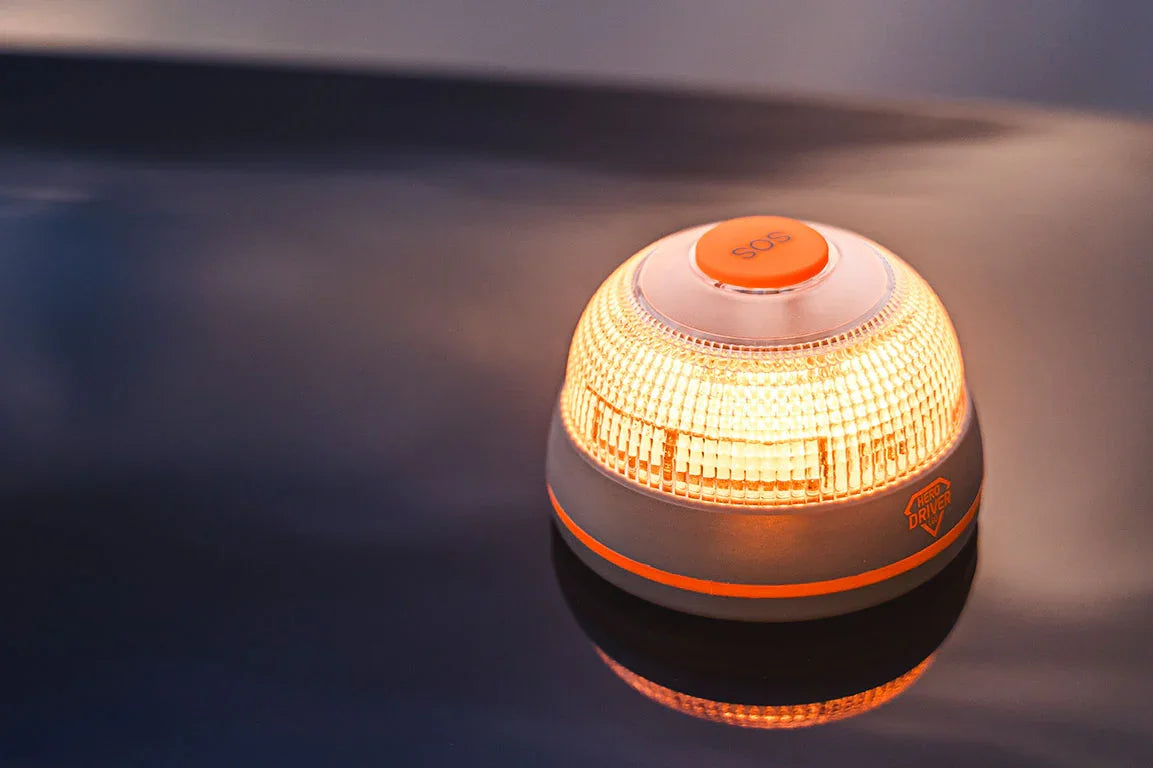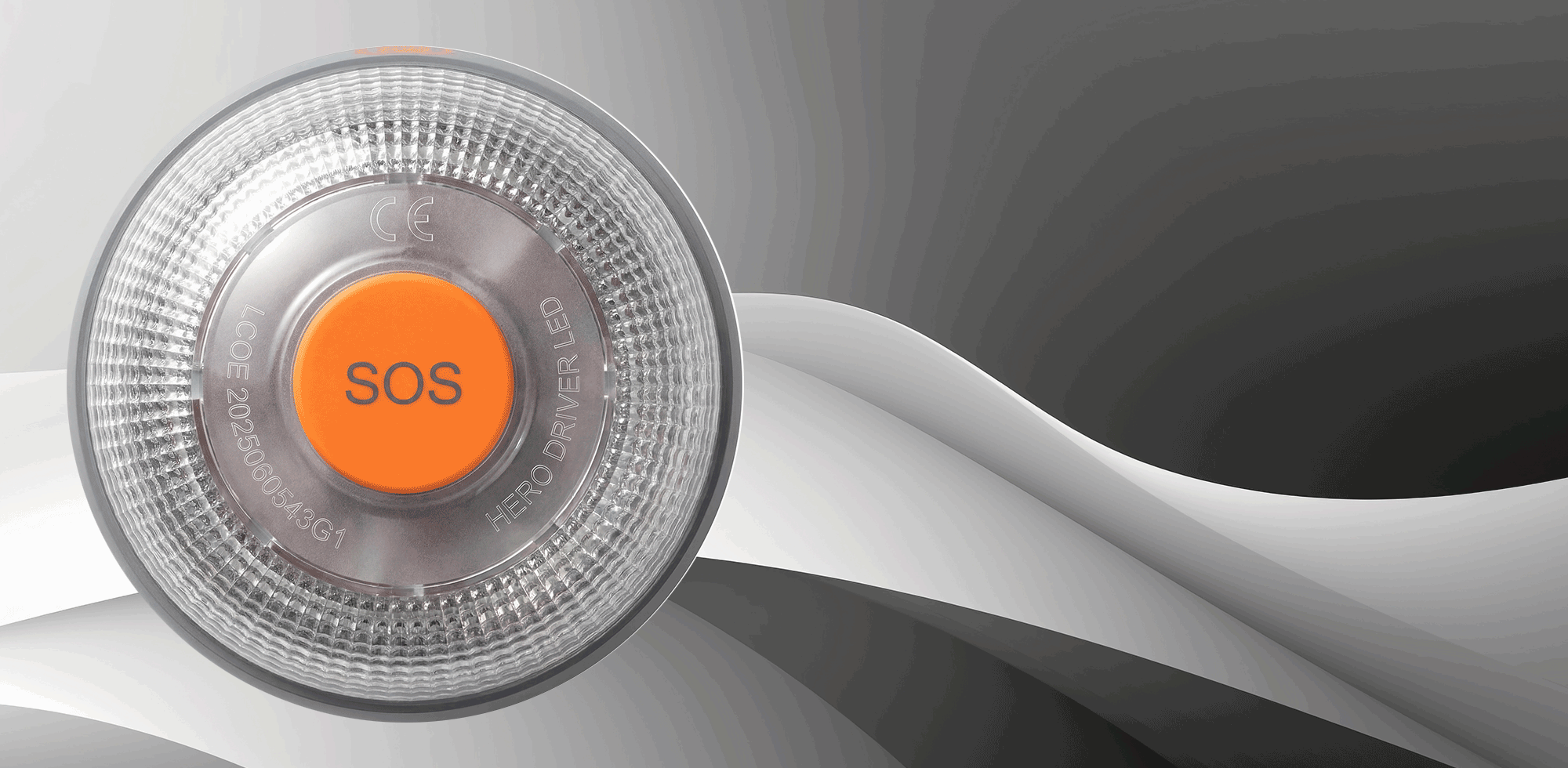Did you know that road safety is evolving toward more convenient and safer solutions? The introduction of the connected V16 Beacon has changed the way breakdowns are reported. We analyze the differences between the V16 beacon and the classic emergency triangle, its advantages, and the DGT recommendations.
What are the V16 Beacon and the emergency triangles?
Before going into the comparison, it's a good idea to review what each element is and what it's used for.
- Emergency triangle : A reflective device placed at a certain distance from the disabled vehicle to alert other drivers. It has been mandatory for decades in Spain.
- V16 Beacon : Flashing yellow light mounted on the roof of the broken-down vehicle and visible from 1 km. There are connected models that automatically inform the DGT of the location of the incident.
Both devices pursue the same goal: to warn others of road hazards and prevent accidents. However, technology and regulations have introduced significant changes.
Current regulations according to the DGT: which is mandatory?
The General Directorate of Traffic (DGT) is implementing a transition toward safer and more efficient devices.
- Until December 31, 2025, you can use both triangles and the unconnected V16 Beacon.
- From January 1, 2026, only the connected V16 beacon will be legal . Triangles will no longer be mandatory, and the unconnected V16 beacon will also no longer be valid.
This decision stems from a desire to reduce risks when signaling breakdowns, especially on expressways and in low-visibility situations. Accidents caused by people exiting the vehicle to place the triangles have prompted this change.
Advantages of the connected V16 beacon compared to the triangle
The V16 represents an improvement in safety and comfort compared to the traditional method. Let's look at its strengths:
- Avoid leaving the vehicle : According to the DGT, with the V16 Beacon, you don't need to get out of the car to signal a breakdown. Simply place your hand out the window and place it on the roof, reducing the risk of accidents on motorways and busy roads.
- Visible from a long distance : Its high-power LED flashing light is visible even in adverse conditions and from 1 km away.
- Automatic communication : Connected models transmit the location of the incident in real time to the DGT cloud, facilitating response and improving traffic management.
- Quick installation : The simplicity of use speeds up the process and allows other users to be notified instantly.
- No travel required : Unlike triangles, you do not need to walk 50 meters (urban roads) or 100 meters (interurban roads) to place them, avoiding additional risks.
Disadvantages and limitations of each system
Although the V16 Beacon offers clear advantages, it is important not to lose sight of the potential limitations of both methods.
-
Emergency triangle :
• It is less visible in foggy conditions, heavy rain or poorly lit areas.
• Placing it involves getting out of the vehicle and traveling a certain distance along the road, which increases exposure to danger.
• It requires space and time for its deployment, which is not always possible on narrow shoulders or complicated sections. -
V16 Beacon :
• The offline version will no longer be supported starting in 2026.
• It must be correctly placed on the roof for maximum visibility.
• Connected units may rely on an internal battery, which requires periodic checking of their status.
Both require maintenance and approval verification according to current regulations.
Why is the DGT opting for the connected V16 beacon?
The main reason is that the V16 Beacon minimizes the risk of collisions. Statistics show that exiting a vehicle due to a breakdown increases the chances of a serious accident. In fact, numerous incidents on highways demonstrate this risk.
The DGT insists that the main advantage of the V16 Beacon is that it allows you to signal your vehicle without exposing yourself to traffic . Furthermore, connectivity adds a level of collective protection by automatically reporting the exact location of the incident and updating information on road signs and emergency services.
Comparison: V16 beacon vs. emergency triangles
To help you decide, we summarize the main differences between the two devices:
- Personal safety : The connected V16 minimizes exposure to traffic, while the triangle requires walking on the road.
- Visibility : While the triangles reflect the light from the headlights, the LED beacon is active and much more powerful, visible from a long distance and under any conditions.
- Speed and ease of use : Installing a V16 takes a few seconds, while deploying and positioning two triangles (one in front and one in the back if necessary) takes longer.
- Communication : Only the connected beacon automatically transmits your location to the DGT, speeding up the response of the assistance services.
- Future legal requirement : From 2026, only the connected V16 beacon will be valid; triangles will be a thing of the past.
Practical tips for choosing and using the connected V16 Beacon
When selecting your connected V16 beacon, follow these recommendations for added peace of mind:
- Make sure it is approved and complies with current Spanish standards.
- Check your battery life and perform regular checks on your battery status.
- Keep the beacon handy in the passenger compartment, avoiding the trunk, for immediate installation.
- Familiarize yourself with its ignition and operating procedure before you need it.
When using it:
- Before stopping, turn on your hazard lights.
- Once stopped and without opening the door, place the beacon on the roof.
- Stay inside the vehicle (and if safe, behind the guardrail) until emergency services arrive.
Frequently asked questions about the V16 Beacon and triangles
Some users still have doubts about the change in regulations and correct use:
- Can I continue using the triangle in 2025? Yes, you can use any system you prefer until January 1, 2026.
- Is it mandatory to have a V16 beacon now? Not mandatory, but it's recommended for safety and to stay ahead of the law.
- What if my V16 beacon isn't connected? Starting in 2026, connectivity will be required to be valid.
Conclusion
The transition from emergency triangles to the connected V16 Beacon marks a turning point in road safety. Prioritize your protection and that of your loved ones by opting for this technology and complying with new regulatory requirements.
Ready to drive safer and adapt to the times? The decision is yours, but safety belongs to everyone.




